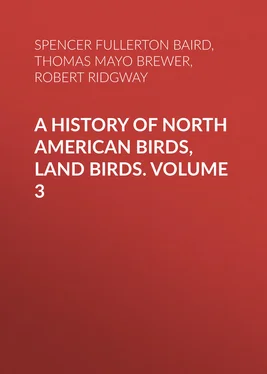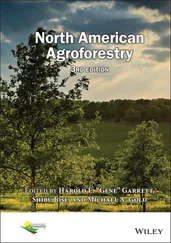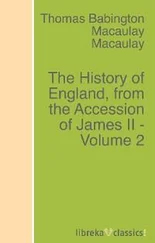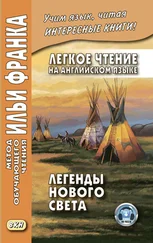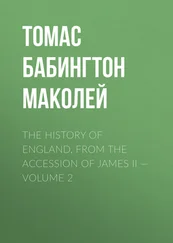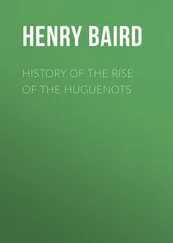Spencer Fullerton Baird - A History of North American Birds, Land Birds. Volume 3
Здесь есть возможность читать онлайн «Spencer Fullerton Baird - A History of North American Birds, Land Birds. Volume 3» — ознакомительный отрывок электронной книги совершенно бесплатно, а после прочтения отрывка купить полную версию. В некоторых случаях можно слушать аудио, скачать через торрент в формате fb2 и присутствует краткое содержание. Жанр: foreign_antique, Биология, foreign_edu, на английском языке. Описание произведения, (предисловие) а так же отзывы посетителей доступны на портале библиотеки ЛибКат.
- Название:A History of North American Birds, Land Birds. Volume 3
- Автор:
- Жанр:
- Год:неизвестен
- ISBN:нет данных
- Рейтинг книги:5 / 5. Голосов: 1
-
Избранное:Добавить в избранное
- Отзывы:
-
Ваша оценка:
- 100
- 1
- 2
- 3
- 4
- 5
A History of North American Birds, Land Birds. Volume 3: краткое содержание, описание и аннотация
Предлагаем к чтению аннотацию, описание, краткое содержание или предисловие (зависит от того, что написал сам автор книги «A History of North American Birds, Land Birds. Volume 3»). Если вы не нашли необходимую информацию о книге — напишите в комментариях, мы постараемся отыскать её.
A History of North American Birds, Land Birds. Volume 3 — читать онлайн ознакомительный отрывок
Ниже представлен текст книги, разбитый по страницам. Система сохранения места последней прочитанной страницы, позволяет с удобством читать онлайн бесплатно книгу «A History of North American Birds, Land Birds. Volume 3», без необходимости каждый раз заново искать на чём Вы остановились. Поставьте закладку, и сможете в любой момент перейти на страницу, на которой закончили чтение.
Интервал:
Закладка:
Sp. Char. Adult (♂, 43,134, Fort Resolution, Brit. N. Am., June; J. Lockhart). Upper parts dark bluish-plumbeous, approaching black anteriorly, but on rump and upper tail-coverts becoming fine bluish plumbeous-ash. On the head and neck the continuous plumbeous-black covers all the former except the chin and throat, and the back portion of the latter; an invasion or indentation of the white of lower parts up behind the ear-coverts separating that of the cheeks from the posterior black, throwing the former into a prominent angular patch; forehead and lores grayish. All the feathers above (posterior to the nape) with transverse bars of plumbeous-black, these most sharply defined posteriorly, where the plumbeous is lightest. Tail black, more plumbeous basally, very faintly paler at the tip, and showing ten or eleven transverse narrow bands of plumbeous, these most distinct anteriorly; the bars are clearest on inner webs. Alula, primary and secondary coverts, secondaries and primaries, uniform plumbeous-black, narrowly whitish on terminal margin, most observable on secondaries and inner primaries. Lower parts white, tinged with delicate cream-color, this deepest on the abdomen; sides and tibiæ tinged with bluish. Chin, throat, and jugulum immaculate; the breast, however, with faint longitudinal shaft-streaks of black; sides, flanks, and tibiæ distinctly barred transversely with black, about four bars being on each feather; on the lower tail-coverts they are narrower and more distant; on the abdomen the markings are in the form of circular spots; anal region barred transversely. Lining of the wing (including all the under coverts) white tinged with blue, and barred like the sides; under surface of primaries slaty, with elliptical spots or bars of creamy-white on inner webs, twelve on the longest. Wing-formula, 2–1–3. Wing, 12.25; tail, 6.00; tarsus, 1.60; middle toe, 1.85; outer, 1.40; inner, 1.20; posterior, .80; culmen, .80.
♀ (13,077, Liberty Co., Georgia; Professor J. L. Leconte). Like the male, but ochraceous tinge beneath deeper; no ashy wash; bands on the tail more sharply defined, about ten dark ones being indicated; outer surface of primaries and secondaries with bands apparent; tail distinctly tipped with ochraceous-white. Inner web of longest primary with thirteen, more reddish, transverse spots. White of neck extending obliquely upward and forward toward the eye, giving the black cheek-patch more prominence. Markings beneath as in the male. Wing-formula the same. Wing, 14.50; tail, 7.00; tarsus, 1.95; middle toe, 2.10; culmen, .95.
Juv. (♂, 53,193, Truckee River, Nevada, July 24, 1867; R. Ridgway: first plumage). Above plumbeous-black, tail more slaty. Every feather broadly bordered terminally with dull cinnamon; these crescentic bars becoming gradually broader posteriorly, narrower and more obsolete on the head above. Tail distinctly tipped with pale cinnamon, the inner webs of feathers with obsolete transverse spots of the same, these touching neither the edge nor the shaft; scarcely apparent indications of corresponding spots on outer webs. Region round the eye, and broad “mustache” across the cheeks, pure black, the latter more conspicuous than in the older stages, being cut off posteriorly by the extension of the cream-color of the neck nearly to the eye. A broad stripe of pale ochraceous running from above the ear-coverts back to the occiput, where the two of opposite sides nearly meet. Lower parts purplish cream-color, or rosy ochraceous-white, deepest posteriorly; jugulum, breast, sides, flanks, and tibiæ with longitudinal stripes of plumbeous-black, these broadest on flanks and abdomen, and somewhat sagittate on the tibiæ; lower tail-coverts with distant transverse bars. Lining of the wing like the sides, but the markings more transverse; inner web of longest primary with nine transverse purplish-ochre spots. Wing-formula, 2–1, 3. Wing, 12.50; tail, 7.00. Length, 16.50; expanse, 39.25. Weight, 1½ lbs. Basal half of bill pale bluish-white, cere rather darker; terminal half (rather abruptly) slate-color, the tip deepening into black; iris very dark vivid vandyke-brown; naked orbital space pale bluish-white, with a slight greenish tint; tarsi and toes lemon-yellow, with a slight green cast; claws jet-black.
Hab. Entire continent of America, and neighboring islands.
Localities: Guatemala (Scl. Ibis I, 219); Veragua (Salv. P. Z. S. 1867, 158); Sta. Cruz (Newton, Ibis, I, 63); Trinidad (Taylor, Ibis, 1864, 80); Bahamas (Bryant, Pr. Bost. Soc. 1859, VII); Cuba (Cab. Journ. II, lxxxiii); (Gundl. Repert. 1865, 225); Jamaica, (Gosse, B. Jam. 16; March, Pr. Ac. N. S. 1863, 304, et Mus. S. I.); Tierra del Fuego (Sharpe, Ann. & Mag. N. H.; “ F. cassini , Sharpe”).
The young plumage above described corresponds exactly with that of young peregrinus from Europe, a comparison of the specimen above described with one of the same age from Germany (54,064, Schlüter Col.) showing no differences that can be expressed. Many American specimens in this plumage (as 19,397, Fort Simpson) show a wash of whitish over the forehead and anterior part of the crown; having before us but the one specimen, we cannot say whether or not this is ever seen in the European bird. Specimens more advanced in season—perhaps in second year—are colored as follows: The black above is more brownish, the feathers margined with pale brown,—these margins broader, and approaching to white, on the upper tail-coverts; the tail shows the ochraceous bars only on inner webs. The supraoral stripe of the youngest plumage is also quite apparent.
A still younger one from the same locality (No. 37,397) has the upper plumage similar to the last, the pale edges to the feathers, however, more distinct; tail with conspicuous spots. White beneath clearer, and invading the dusky of the head above as far back as the middle of the crown; the supraoral stripe is distinct, scarcely interrupted across the nape.
In the adult plumage the principal variation is in the extent and disposition of the bars beneath. In most individuals they are regularly transverse only laterally and posteriorly, those on the belly being somewhat broken into more irregular cordate spots, though always transverse; in no American specimen, however, are they as continuously transverse as in a male (No. 18,804) from Europe, which, however, in this respect, we think, forms an exception to most European examples, at least to those in the Smithsonian Collection. All variations in the form, thickness, and continuity of the markings below, and in the distinctness of the bars above, are individual.
Very old males (as 49,790, Fort Yukon; 27,188, Moose Factory (type of Elliott’s figure of F. peregrinus , in Birds of America); and 42,997, Spanishtown, Jamaica) lack almost entirely the reddish tinge beneath, and have the lateral and posterior portions strongly tinged with blue; the latter feature is especially noticeable in the specimen from Jamaica, in which also the bars are almost utterly wanting medially. Immature birds from this island also lack to a great degree the ochraceous tinge, leaving the whitish everywhere purer.
A female adult European bird differs from the average of North American examples in the conspicuous longitudinal streaks on the jugulum; but in a male these are hardly more distinct than in 13,077, ♀, Liberty Co., Georgia; 11,983, “United States”; 35,456, Peel’s River; 35,449, ♀, and 35,445, ♀, Fort Yukon, Alaska; 35,452, La Pierre’s Hous., H. B. Ter.; 35,459 ♂, Fort Anderson; and 28,099 ♀, Hartford, Conn. In none of these, however, are they so numerous and conspicuous as in a European female from the Schlüter Collection, which, however, differs in these respects only from North American specimens.
A somewhat melanistic individual (in second year? 32,735, Chicago, Ill.; Robert Kennicott) differs as follows: Above continuously pure black; upper tail-coverts and longer scapulars bordered terminally with rusty-whitish. Tail distinctly tipped with white; the inner webs of feathers with eight elliptical transverse bars of pale ochraceous, and indications of corresponding spots of the same on outer webs, forming as many inconspicuous bands. Beneath ochraceous-white; the neck, breast, and abdomen thickly marked with broad longitudinal stripes of clear black,—those on the jugulum cuneate, and on the breast and abdomen broadly sagittate; the tibiæ with numerous cordate spots, and sides marked more transversely; lower tail-coverts with narrow distant transverse bars. On the chin and throat only, the whitish is immaculate, on the other portions being somewhat exceeded in amount by the black. Inner web of longest primary with seven transverse elliptical bars of cream-color. Wing, 12.20; tail, 9.40.
Читать дальшеИнтервал:
Закладка:
Похожие книги на «A History of North American Birds, Land Birds. Volume 3»
Представляем Вашему вниманию похожие книги на «A History of North American Birds, Land Birds. Volume 3» списком для выбора. Мы отобрали схожую по названию и смыслу литературу в надежде предоставить читателям больше вариантов отыскать новые, интересные, ещё непрочитанные произведения.
Обсуждение, отзывы о книге «A History of North American Birds, Land Birds. Volume 3» и просто собственные мнения читателей. Оставьте ваши комментарии, напишите, что Вы думаете о произведении, его смысле или главных героях. Укажите что конкретно понравилось, а что нет, и почему Вы так считаете.
